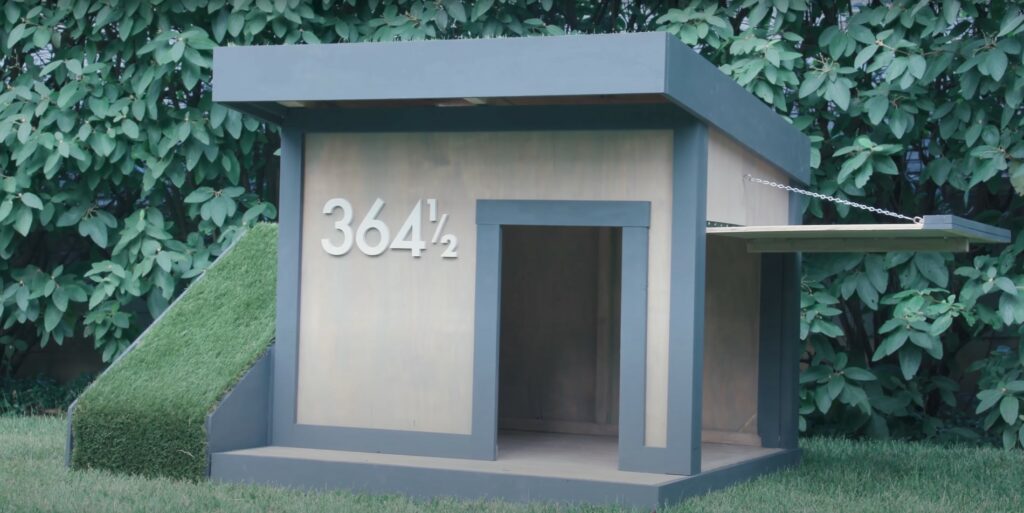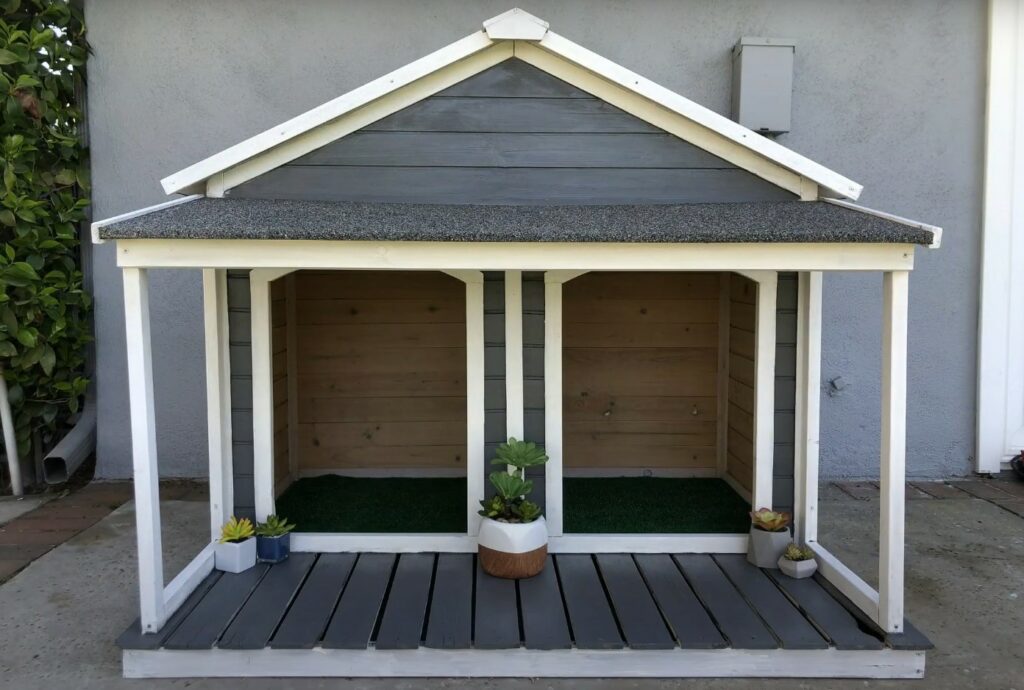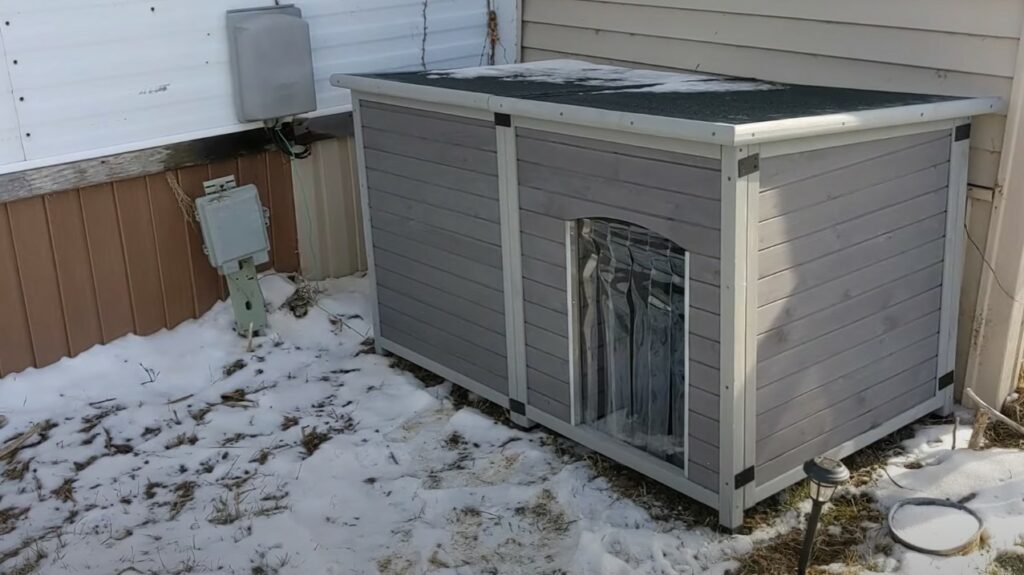During the winter months, many owners enjoy resting indoors, where it’s heated and cosy, but dogs often have other ideas. They want to go outside to run and play, and adequate exercise is essential to ensure these animals stay content, even if it’s cold out. This is why a warm dog house is a good investment, so it is vital to understand the ways you can insulate a dog kennel.
There are many insulation methods to ensure the dog’s house offers enough protection from the cold weather. Some ways to insulate dog houses are simpler than others, but using all of the methods outlined in this article will ensure the dog is kept comfortable and warm as the temperature drops.
Table of Contents
How to Insulate a Dog Kennel
Suppose you need to insulate your dog’s kennel. In that case, several aspects should be considered before the work begins, including the location, the materials used, and other changes that can be made to make the dog house a little warmer.
Consider the Location
Although the location of the dog house will depend mainly on the amount of space available, it is also essential to consider how the area will affect the kennel’s warmth. This will differ due to the type of garden the dog owner has; a larger garden will have many areas to choose from, while a smaller garden will be limited in free space.
Before choosing the location, there are two main aspects to remember: avoid open areas and choose an area with plenty of sunlight. These requirements have been outlined below.
Avoid Open Areas
Choosing an enclosed space for the kennel’s location will help to keep the dog house warm. If the kennel is placed in an open area, it is not protected from the elements. This means the wind and rain will hit the dog house, which can cause it to be cold and wet, especially if it has not been waterproofed. Not only will these weather conditions damage the kennel, but the noise of rain and wind can also distress the dog.
Some examples of an enclosed space suitable for a dog house include against the garden fence, beside the garden shed, at the side of the owner’s house, or sheltered by trees and other tall plants. These areas will protect the kennel from cold weather most of the time, and they will also offer the dog a sense of security by blocking out loud noises.
Many dogs enjoy the comfort of their own dens, which are often small and only have enough room for the individual dog. For this to work, the dog house should be a safe place for the dog, not a place used for punishment or isolation; this will help to ensure the animal is comfortable and happy to stay in the kennel.

Choose a Spot with Plenty of Sunlight
Unsurprisingly, if the dog house is placed in an area that receives sunlight, this will warm the kennel slightly. This can be difficult to achieve if the area is enclosed, but it is not impossible; many areas will be protected on one side and receive sunlight from the other. The side facing the sun should be the largest side of the dog house to absorb as much light and warmth as possible.
Dog owners should monitor the kennel’s temperature after moving it into the sun’s path to ensure it doesn’t become too warm. If it is too hot, this can be dangerous for the dog.
As well as ensuring the dog house doesn’t become overly heated, the dog should be protected from the sun’s rays. This is easy to do by adding a sun cover or shade, offering sun protection. A cover or shade can be placed over the entire dog house or just at the opening.
Use the Correct Insulation Materials
Blankets, carpet off-cuts, and plastic sheeting are commonly used as insulation in dog houses; these materials are relatively inexpensive and easy to access. However, there are several options specially designed for insulation that can be used, which will provide warmth against cold temperatures. Some of the most common insulation materials are:
- Fibreglass insulation
- Foil bubble wrap
- Polystyrene foam
- Spray foam insulation
Chances are you’ve come across these options before; for example, fibreglass insulation is the pink stuff used in houses and polystyrene, well-known by the brand name Styrofoam, has been used in takeaway cups. By using one of these materials, you can help keep all the heat your dog’s body produces inside the kennel.
Instructions on using the four best materials for insulating dog houses are below.
Fibreglass Insulation
Although fibreglass insulation can irritate the skin and lungs, and precautions must be taken when using this, it is one of the most insulating materials that can be used in dog kennels. It can be nailed or stapled to the inside walls of the dog house before sealing it off with plastic or wood panels. Or, if the walls are hollow, the insulation can simply be stuffed in the gaps.
Foil Bubble Wrap
Similar to packaging bubble wrap, this insulation has many air pockets and is coated with a thin layer of aluminium foil to trap heat. The bubble wrap is easy to use as it can be cut to size and stapled or glued to a surface. Remember to block access to the foil bubble wrap with plastic or wood to ensure it doesn’t become damaged.
Polystyrene Foam
As one of the cheapest options, polystyrene foam is a common insulating material. It is available in different thicknesses and can be cut into panels to fit the ceiling, floor, and walls of the dog house and stuck into place with glue; these panels should then be covered with wood or plastic to prevent the dog from chewing the foam.
Spray Foam Insulation
Spray foam is an excellent option for insulation if the dog house has hollow walls, although it might be expensive for large dog houses. It can be sprayed into the gap between the interior and exterior walls. This can also be done if the walls are not hollow; you must add wooden or plastic panels to the dog house to create a suitable gap, though.
Dog house insulation goes further than the materials used to prevent heat loss; it can also include the type of dog house used. Wooden kennels, for example, will have different insulating properties than plastic dog houses, especially softwoods like cedar lumber, which usually have more air pockets.
It is also worth noting that a dog house made of wood might require water sealant to ensure the wooden panels last longer.
Protect the Insulation Layer
Separating the insulation from the dog is critical. Many insulation materials can be hazardous to dogs, especially if ingested, so it is vital to prevent the dog from chewing and eating it. This can be tougher if the insulation is placed on the interior walls, as it will require additional panels or false walls blocking the dog from coming into contact with the insulating material.
The insulation will also need to be externally protected, too. You can do this by checking all holes on the exterior walls have been patched up, the wood has been correctly sealed to prevent water damage, and the entrance has a plastic-strip curtain on the outside and a fabric curtain on the inside.
Paint the Dog House Black
Painting the dog house a dark colour will attract more heat and sunlight, especially if placed in the sun’s path, as previously mentioned. Objects that are darker in colour heat up quickly in the sun; light colours will often reflect the light and warmth back.
Although black is the most effective colour, it isn’t the most attractive option. Instead, you might choose charcoal grey, forest green, or navy blue, all suitable choices to paint dog kennels with.

Ensure the Dog Kennel is Heated
Although insulation and other factors will help to keep the dog kennel warm, it should be heated on the inside if the dog is kept outdoors frequently. There are simple ways to do this without adding electricity to the dog’s house, but some dog parents might choose to do just that.
Add a Heat Pad
Microwave heat pads can be placed under the dog bed to increase the temperature inside the dog’s house. These pads are filled with a specially formulated gel that traps heat within it when microwaved. It is essential that the heat pads are designed to be used by dogs; if not, it could cause injury to the dog.
If you do not have a heating pad, using a sock filled with uncooked rice can be just as efficient. This can be microwaved and placed inside the dog house to provide extra heat.
You could also buy a corded heating pad, which needs an electrical supply. An electrical heat pad should be monitored at all times as they can become too hot at times, even those that have an attached thermostat. If your dog likes to chew on things it shouldn’t, then this is best avoided.
Provide Warm Bedding
This might seem an obvious addition, but that doesn’t make it less important. Dog blankets and a thick dog bed can help to use up free space and provide the pup with layers of fabric to create a nest in, which will help to retain body heat. You should try to pack plenty of bedding into the dog house to take up any unused space, as this free space will be detrimental to warming the house up.
Adding extra layers of warm bedding will also help to establish the insulated dog house as a den.
Use a Heater
Before purchasing a heater to be used in the dog house, verify the product has been specifically designed for this use. This will ensure the heater is unlikely to burn the dog and the cords have been covered to prevent chewing. Most furnaces for dog houses can be mounted to the walls or ceiling and produce enough heat. Of course, to avoid this heat escaping and cold seeping in, using the other tips in this article is essential.
If you want the dog house to have its own power source for a heater, you might consider solar panels; this will reduce the risk of cords being exposed to the elements outside.
Keep the Kennel Elevated
The ground outside can be colder during the winter, so the kennel’s floor must be off the ground. A dog house can be affected by freezing ground, causing the temperature within to drop considerably, which will, in turn, affect the dog’s body heat.
As well as to prevent the cold from seeping into the kennel, flooding risks are also minimised when the dog house is raised off the ground.

Insulating a Dog Kennel: FAQs
To keep your dog warm in its kennel, you should follow the tips listed in this article to create a comfortable and warm dog house that has been correctly insulated. If you are still unsure whether your dog requires an insulated dog kennel, then the information below should answer any questions.
Can I buy an insulated dog house?
Insulated dog houses are available to buy; some can even be custom-made to fit the customer’s available space and requirements. This can sometimes be more expensive than DIY insulating a dog house.
Can all dogs sleep outside?
Although most dogs come with fur coats, this does not mean sleeping outdoors is suitable for all dogs. A lot of dog breeds do not have the correct coat types to cope with the autumn and winter weather, unlike dogs with double coats, like huskies. Puppies, small breeds, senior dogs, and sick dogs cannot regulate their body temperature reliably, and they should not be left outside.
If you own a hardier dog that does sleep outside comfortably, it is essential to monitor them carefully and provide them with a warm area to retreat to, like an insulated dog house. When it is too cold, bring the dog indoors.
How cold is too cold for an outdoor dog?
Most dogs can stay outside until the temperature drops below 7°C; this is when it becomes too cold, and the dogs should be brought indoors. Dogs can develop hypothermia or even frostbite if left out in the cold for too long.
A good rule of thumb to follow is if it’s too cold for you, it’s too cold for your dog.
To Sum Up
Even though most dogs have fur to protect them, this does not mean they can stay comfortable and safe outside in all weather. This is why dog owners should provide their pets with dog houses and work to insulate the kennels properly. It might sound difficult, but insulating a dog house can be simple if you have the correct materials and know the requirements.
Some aspects of insulating a dog house might be a surprise, such as considering the location and elevating it off the ground. Other factors, like protecting the chosen insulation and providing layers of warm bedding, might seem a little more obvious.
Now you know that to keep your dog warm when it is outside, it is essential to provide a dog house. When buying a dog house, insulating should be a priority. With the help of this article, you can now insulate the dog house and protect your dog from the chilly winter weather.

